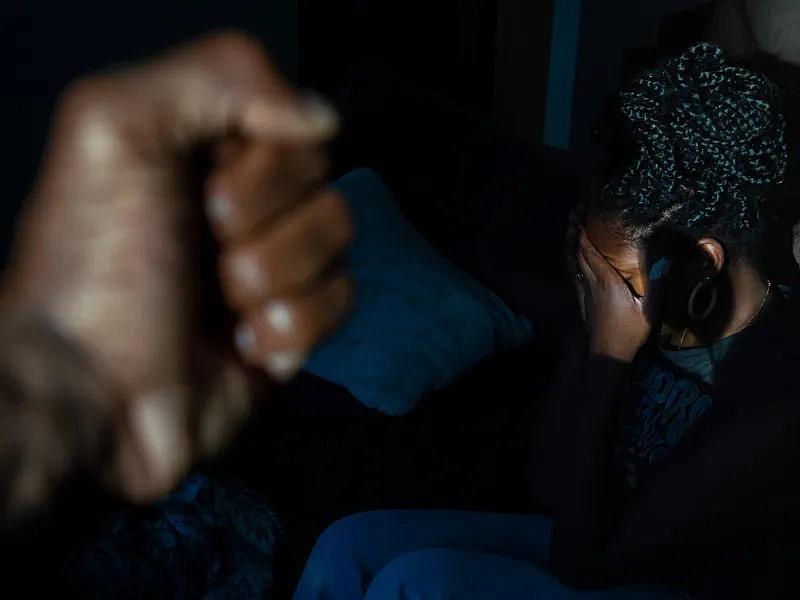A reporter explores the links between domestic violence and community violence in Sacramento’s Black community

(Photo via The Sacramento Observer)
Many victims of domestic violence fail to report incidents to law enforcement, impacting the quality of data collected on the topic. This is particularly true in the Black community, where there’s an age-old adage that says, “What happens in this house, stays in this house.”
In my series “A World of Hurt,” which the Center for Health Journalism supported with a grant from its Domestic Violence Impact Reporting Fund, I highlighted the Sacramento Black community’s efforts to get to the root of domestic violence and intimate partner violence in hopes of preventing it and other forms of community violence that are often interconnected.
“It’s complicated,” I was told more than once by sources I spoke with.
Advocates and researchers agree that there is significant overlap in the factors that drive domestic violence and those behind community gun violence. Trauma, mental health issues, poverty and other socioeconomic inequalities — all play a part. Stakeholders say paying closer attention to abusers and keeping them from having guns could help prevent future firearm injury and death. Experts are also calling for a more comprehensive study of the intersection between domestic violence and other gun-related crimes. Data is out there, but it's often hard to obtain from law enforcement and it is often not directly focused on the Black community.
In the wake of recent deaths of unarmed African Americans like George Floyd, Breonna Taylor and locally, Stephon Clark, there have been demands across the country for law enforcement reform that have made their way to state and national lawmakers. There have also been calls to defund the police or restructure police spending. Related discussion has centered on removing the police presence from some mental health and domestic violence calls.
Local activists like Ryan McClinton of Public Health Advocates and Asantewaa Boykin, co-founder of the Anti-Police Terror Project, say they’ve had to rethink their initial positions, as the work is dangerous for civilian volunteers who would respond instead of police in such programs. Pamela Tate of Black Women Revolt Against Domestic Violence described domestic violence situations as the most dangerous calls police officers can be dispatched to, but says police need more training in how to deescalate domestic and intimate partner violence situations. (Yes, there's a story there.)
Race is also a factor, advocates say. Often who the victim is and what they look like still determines what assistance, if any, they receive. This must change.
Also, victims can become invisible and forgotten as abusers enter into plea deals for lighter sentences for “more serious” offenses. More often than not, these batterers go right back home to the same neighborhoods where they’ve had previous offenses and back to the same women they’ve beaten up. Many have children with these women, who may be relying on them for assistance.
The goal of my reporting was to shine a light on the need for more attention to the correlation between domestic violence and some of the other violence we’re seeing in the Black community.
To some, gun violence, like domestic violence, is “normal.” That perception comes from continued exposure, which UC Davis researcher Dr. Shani Buggs called “one of the strongest predictors of future violence.” Growing up in a home or neighborhood with high exposure to violence has also been linked to higher rates of weapon possession. A 2017 study published in the Annals of Internal Medicine found that those who witnessed violence had 43% to 59% higher odds of gun possession, and those who experienced violence had 63% to 87% higher odds of gun possession.
Experts point to a number of socioeconomic factors that contribute to violence in the Black community. But does the lack of resources give folks a pass to terrorize and traumatize their own neighborhoods?
It’s hard to force yourself to look in the mirror and not only see your flaws, but to admit them out loud. Sometimes, however, you have to rip the Band-Aid off and let the air hit the wound. That’s how healing begins.
Advocates say creating safe spaces for people to discuss relationships, emotional upheaval, stressors and mental health issues and providing alternatives to criminal behavior is vital. Funding for such resources is also key.
Reporting a project like this is quite an undertaking, as it should be. For reporters embarking on a similar project, I offer up the following suggestions:
1) Immerse yourself in information on the topic you’re writing about. Search for and register for Zoom discussions that focus on the topic. It’s a great way to find more sources or source ideas for your stories.
2) Find out what officials in your area handle or have jurisdiction over the topics you’re reporting on. Can you contact them directly? Do you have to reach them through a public information officer first?
3) Diversify your source pool. If you’re having a difficult time reaching the person you intended to quote or focus on, cast your net wider. There are big fish and little fish. Don't underestimate the little fish and their ability to feed you what you need. Also, there are lots of experts, particularly ones of color, who often get overlooked by the media.
4) When local data is scarce, look for national numbers and work backwards. Finding national info can help you think of local sources to reach out to. Also, you can use the national data to shape questions to local stakeholders, or even prod them to provide local information when they may have been previously hesitant to provide it.
5) Don’t be afraid to “look dumb.” Data can be intimidating and confusing, but it’s your job to break it down for readers. Don’t be afraid to ask experts for clarification documents and the information in them. Your writing will be better for it.
6) Try to bring in all members of the publishing process (editors, photographers, designers, copy editors) early and often.
